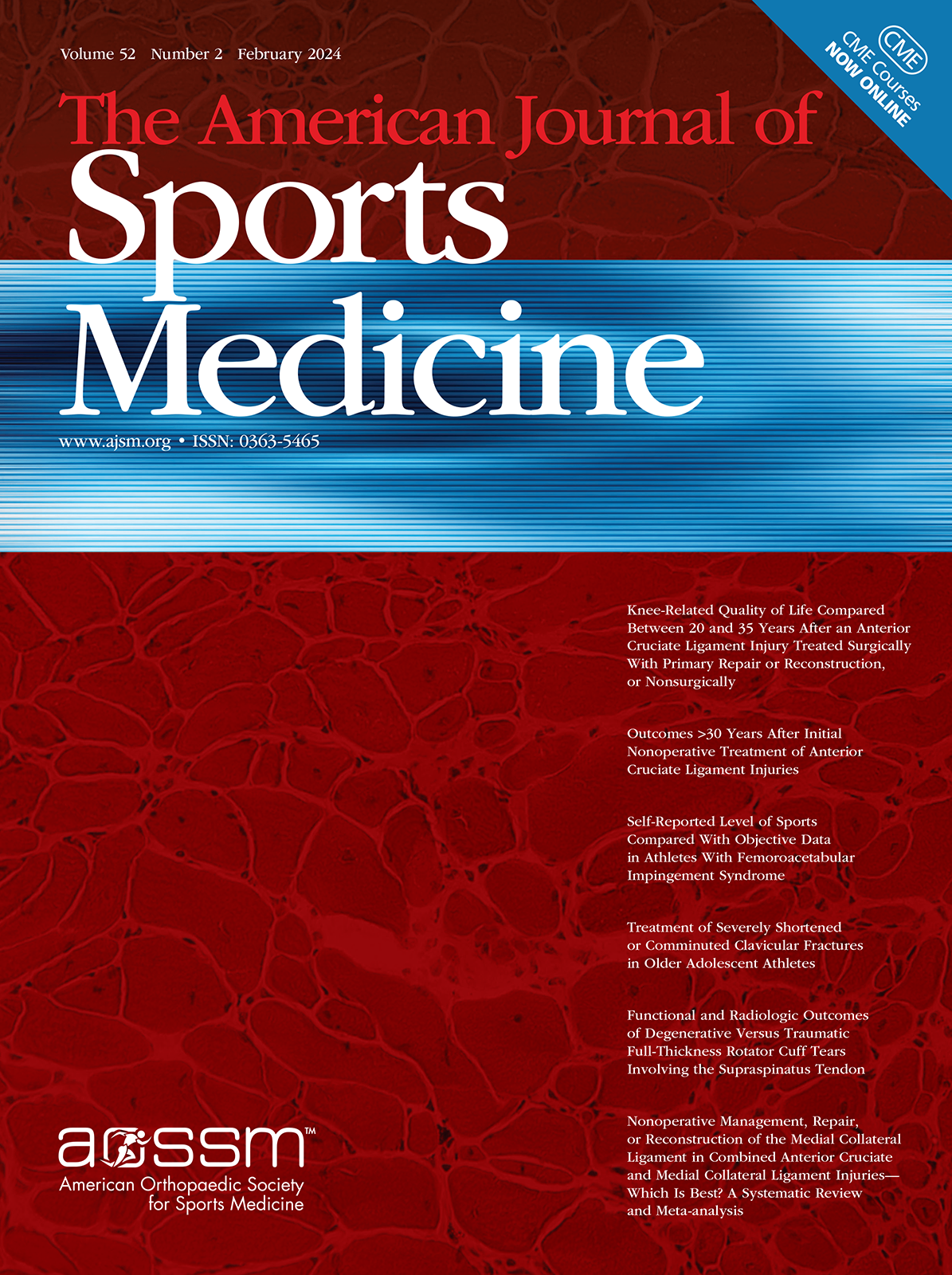
Tenodesis Reduces Rate of Popeye Deformity vs Tenotomy For Long Head Bicep Tendon Lesions at 2 Years

Tenodesis Reduces Rate of Popeye Deformity vs Tenotomy For Long Head Bicep Tendon Lesions at 2 Years
Biceps Tenodesis Versus Tenotomy in the Treatment of Lesions of the Long Head of the Biceps Tendon in Patients Undergoing Arthroscopic Shoulder Surgery: A Prospective Double-Blinded Randomized Controlled Trial
Am J Sports Med . 2020 May;48(6):1439-1449Synopsis
One hundred and fourteen patients scheduled to undergo arthroscopic shoulder surgery to treat peri-operatively confirmed lesion of the long head of the biceps tendon were randomized to undergo a bicep tenodesis (n=57) or tenotomy (n=57). The primary outcome of interest was disease specific progression measured by the American Shoulder and Elbow Surgeons (ASES) at 3, 6, 12, and 24months follow-up....
To view the full content, login to your account,
or start your 30-day FREE Trial today.
FREE TRIAL
LOGIN
Forgot Password?
Explore some of our unlocked ACE Reports below!

Learn about our AI Driven
High Impact Search Feature
Our AI driven High Impact metric calculates the impact an article will have by considering both the publishing journal and the content of the article itself. Built using the latest advances in natural language processing, OE High Impact predicts an article’s future number of citations better than impact factor alone.
Continue



 LOGIN
LOGIN

Join the Conversation
Please Login or Join to leave comments.